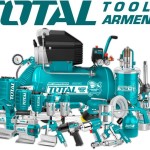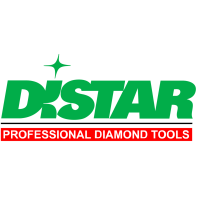
Let's look at the basics of operation and rules for using a grinder
An angle grinder, or Bulgarian, is a versatile tool used for cutting, grinding, polishing and cleaning various materials. However, improper handling of this powerful tool can lead to injuries and damage. In this article, we will look at how to properly work with angle grinders so that the process is safe and effective.
1. Choosing an angle grinder
Before you start working, it is important to choose a Bulgarian suitable for a specific task. Machines vary in power, disc diameter and types of attachments used:
Power. For small jobs (grinding, cutting small metal parts), a grinder with a power of 600-900 W is suitable. For more complex tasks, such as cutting thick metal sheets or concrete, it is better to use powerful models from 1,200 W and above.
Disk diameter. The most popular discs with a diameter of 115 mm, 125 mm and 230 mm. Smaller discs are used for delicate operations, larger ones are used for cutting and grinding large materials.
Attachment type. The choice depends on the type of work: discs for cutting metal or stone, brushes for cleaning the surface, discs for polishing.
2. Preparation for work
Before starting work, it is important to make sure that the grinder is in good condition. Follow these steps:
Inspect the tool. Check the integrity of the housing, wires and protective covers. Make sure that the disc or other attachment is securely fastened.
Use protective equipment. The grinder can create a lot of dust and sparks, so it is important to protect your eyes and respiratory system. It is recommended to use glasses, a respirator, gloves and ear protectors, as working with the tool is quite noisy.
Choose a suitable work surface. Work on a flat and stable surface. Make sure that there are no foreign objects or people in the work area.
3. Working technique
The main principle of working with an angle grinder is accuracy and smoothness of movements. Here are some key points:
Hold the tool with both hands. This will ensure stability and control over the process. Do not try to work with one hand.
Do not press on the disc. The grinder should cut or grind under its own weight. Excessive pressure can cause the tool to overheat or the disc to break.
Move smoothly. Start moving from the edge of the material, without lingering in one place. This will prevent overheating and damage to the surface being processed.
Monitor the angle of inclination. For grinding, it is recommended to hold the disc at an angle of 15-30 degrees to the surface. For cutting, the disc should be at an angle of 90 degrees.
Stop the disc only after it has completely stopped. Never try to stop a rotating disc with your hands or rest it against the surface.
4. Safety at work
Safety is a key aspect when using an angle grinder, as working with rotating tools is always associated with risks.
Use a protective cover. Never remove the guard from the grinder - it prevents injuries from flying disk fragments and sparks.
Do not exceed the recommended disk rotation speed. Each disk has a speed limit. Exceeding this limit may lead to disk destruction.
Avoid overheating. Allow the tool to "rest" from time to time, especially when performing long operations. Overheating can damage both the tool and the attachment.
Do not work near flammable materials. The grinder creates a lot of sparks, which can cause a fire.
5. Maintenance and care
For a long service life of the angle grinder, it is important to properly care for it:
Regularly check and replace disks. Worn or damaged disks can break during operation.
Clean the tool after work. Remove dust and material residues from the housing and ventilation openings to prevent overheating.
Lubricate the gearbox. Periodically disassemble the housing and lubricate the gearbox to extend the service life of the tool.









-1280x853.jpg)

Leave a Comment